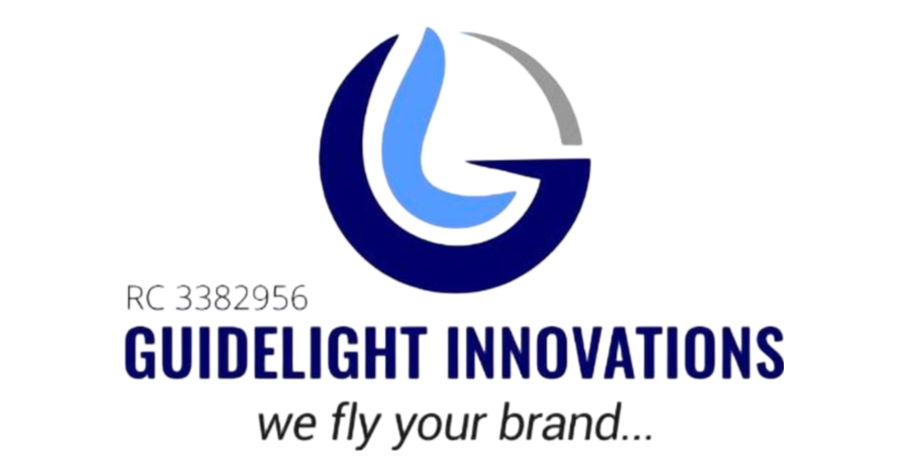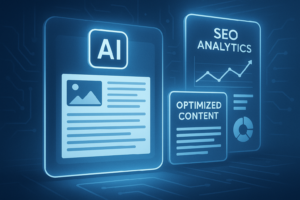The digital marketing hamster wheel is exhausting—and worse, it’s not working. Businesses post multiple times daily across platforms, chase trending hashtags, and celebrate vanity metrics like likes and impressions while revenue remains stagnant. The uncomfortable truth is that most digital marketing activity is busy work disguised as strategy. It’s time for a fundamental shift: stop posting for the sake of posting and start building conversion systems that actually grow revenue.
The Posting Trap: Activity Versus Results
Walk into any marketing meeting, and you’ll hear metrics that sound impressive: “We had 50,000 impressions this month!” or “Our engagement rate increased by 15%!” But when leadership asks the real question—”How much revenue did this generate?”—the room often goes silent. This disconnect between marketing activity and business results has reached crisis proportions.
According to research from Gartner’s marketing research division, 63% of marketing leaders struggle to demonstrate the business impact of their social media efforts, and 72% report that executive stakeholders are increasingly questioning social media’s ROI. The problem isn’t that social media or content marketing don’t work—it’s that most brands approach them backwards, prioritizing output over outcomes.
The posting trap works like this: marketers see competitors publishing content, read articles about the importance of “consistent presence,” and conclude that more posting equals more success. This leads to a content treadmill where teams spend 80% of their time creating and publishing while spending only 20% thinking about conversion strategy. The result is impressive-looking activity reports with disappointing revenue impact.
Understanding the Conversion-First Mindset
The shift from posting to converting requires fundamentally rethinking how digital marketing works. Instead of asking “What should we post today?” the conversion-first approach asks “What customer action would move our business forward, and how can we engineer that action?”
This isn’t about abandoning content or social media—it’s about redesigning every marketing asset as a conversion mechanism. Every piece of content should have a clear job: moving prospects from awareness to consideration, consideration to evaluation, or evaluation to purchase. Content without conversion purpose is just noise, regardless of how clever or engaging it might be.
Neil Patel’s conversion optimization research demonstrates that brands focusing on conversion architecture rather than volume see average ROI increases of 223% while actually producing less content. The difference lies in intentionality. Each asset is engineered with specific conversion triggers, clear calls-to-action, and measurable outcomes.
Strategic Architecture Over Tactical Volume: Conversion-focused marketing starts with mapping the customer journey and identifying high-leverage conversion opportunities. Where do prospects get stuck? What information do they need to move forward? What objections prevent purchase? Once you understand these friction points, you create specific assets designed to overcome them.
For example, instead of posting daily generic tips on LinkedIn, a B2B software company might create a comprehensive ROI calculator that captures email addresses while helping prospects build their business case. That single asset, promoted strategically, can generate more qualified leads than 100 generic posts because it’s designed for conversion, not just engagement.
The Four Pillars of Conversion-Driven Marketing
Pillar One: Strategic Audience Targeting
In digital marketing, one universal truth stands firm: posting to everyone is posting to no one. Effective, conversion-focused marketing begins with precision audience definition and segmentation. Instead of chasing vanity metrics like likes or impressions, successful brands focus on reaching the right people — those most likely to engage, convert, and stay loyal.
Start by leveraging tools such as Facebook’s Audience Insights, Google Analytics, and LinkedIn Audience Manager to uncover valuable data about your target market. Go beyond basic demographics like age, gender, and location. Dive into psychographics — what your audience values, how they make decisions, what challenges they face, and which solutions they seek online. Study their behaviors, pain points, and buying triggers to identify what truly motivates them to take action.
Once you’ve gathered the data, create detailed buyer personas that go far beyond surface-level traits. Don’t just ask who your ideal customer is — ask why they buy. What keeps them up at night? What KPIs or performance metrics define success in their role? Which blogs, podcasts, or influencers do they trust for advice? The deeper your understanding, the more relevant and persuasive your content becomes.
When you fully understand your audience, every campaign — from your ad copy and email subject lines to your landing pages and offers — will speak directly to their specific needs and emotions. This level of personalization doesn’t just improve engagement; it significantly boosts conversion rates, builds brand trust, and transforms your marketing from noise into meaningful connection.
Pillar One: Strategic Audience Targeting
In digital marketing, one universal truth stands firm: posting to everyone is posting to no one. The days of mass messaging are long gone. In today’s attention-scarce digital world, the brands that win are those that communicate with clarity, precision, and empathy — not volume. Effective, conversion-focused marketing begins with defining exactly who your audience is and understanding why they should care about what you offer.
Many startups and small businesses fall into the trap of chasing vanity metrics — likes, follows, and impressions — rather than focusing on meaningful engagement and conversions. But true growth doesn’t come from reaching everyone; it comes from reaching the right people, those most likely to take action, buy, and advocate for your brand.
1. Harness Data-Driven Audience Insights
Start by leveraging tools such as Facebook Audience Insights, Google Analytics, LinkedIn Audience Manager, and even X (Twitter) Analytics to uncover actionable data about your market. Go beyond the basics of demographics like age, gender, and location — those are only the surface.
Dive into psychographic data: your audience’s lifestyle choices, personal values, motivations, frustrations, and decision-making habits. Ask questions like:
- What does their day look like?
- What goals or challenges define their professional or personal life?
- What objections or fears might hold them back from making a purchase?
These insights help you identify not just who to reach, but how to speak their language.
2. Develop Deep, Empathetic Buyer Personas
Once you’ve gathered the data, translate it into detailed buyer personas — fictional but data-driven profiles that represent your ideal customers. Effective personas go far beyond simple demographics.
Ask questions that uncover the emotional and practical realities of your buyers:
- What keeps them up at night?
- What performance metrics are they measured against?
- Which blogs, influencers, or online communities shape their opinions?
- What problems do they believe only your solution can solve?
For example, if you’re a digital marketing agency targeting small business owners, one persona might be “Ngozi, a 34-year-old fashion entrepreneur in Lagos who wants to grow online sales but struggles with ad targeting and content planning.” This level of clarity allows you to craft campaigns that speak directly to her frustrations and aspirations.
3. Personalize Content Around Audience Intent
When you understand your audience deeply, personalization becomes second nature. Every campaign — from ad copy and email subject lines to landing pages, offers, and social media posts — can be designed to mirror your customer’s mindset.
A conversion-focused marketer tailors every message to the buyer’s journey:
- Awareness stage: Help them recognize their problem.
- Consideration stage: Educate them about possible solutions.
- Decision stage: Show them why your offer is the best choice.
By aligning your content with where your audience is emotionally and mentally, you move from shouting into the void to having relevant, persuasive conversations that lead to conversions.
4. The Power of Segmentation and Testing
Even within a defined audience, segmentation is key. Divide your audience into smaller groups based on specific traits — such as behavior, purchase frequency, or engagement level — and test different messages or visuals for each.
Tools like Mailchimp, HubSpot, or ActiveCampaign allow you to segment and automate messaging so that every lead receives the most relevant content. Over time, data from A/B testing reveals what resonates most, refining your strategy continuously.
5. The Payoff: From Noise to Connection
When you truly understand and respect your audience, your marketing stops feeling like noise and starts feeling like a conversation. This level of alignment doesn’t just increase clicks and conversions — it builds brand loyalty and trust, turning your customers into long-term advocates.
The ultimate goal of strategic audience targeting is simple:
➡️ Stop posting aimlessly.
➡️ Start speaking directly to the people who matter most.
Because when your marketing speaks to the heart of your audience, conversion becomes a natural outcome, not a lucky break.
Pillar Three: Conversion Rate Optimization (CRO) as a Core Discipline
In digital marketing, creating conversion assets is only half the equation; optimizing them is where growth truly happens. A beautiful landing page, a compelling email, or a catchy CTA means little if it doesn’t convert. The difference between a good campaign and a great one often lies in a brand’s commitment to Conversion Rate Optimization (CRO) — the continuous process of testing, measuring, and refining every element that drives user action.
CRO isn’t about guesswork or design preferences; it’s a data-driven discipline that sits at the intersection of marketing psychology, analytics, and user experience. For startups and small businesses, where every click and lead counts, CRO can deliver the highest ROI of any digital marketing activity.
1. Test Relentlessly — Because Assumptions Don’t Convert
Every landing page, email sequence, and call-to-action (CTA) is a living experiment. What looks great to your design team might not resonate with your audience. That’s why A/B testing (also known as split testing) is a non-negotiable practice for brands that take growth seriously.
Use tools like Google Optimize, Optimizely, VWO (Visual Website Optimizer), or HubSpot’s built-in A/B testing suite to systematically test elements such as:
- Headlines and subheadings — clarity and emotional tone can change engagement drastically.
- CTA buttons — color, text, and placement all impact click-through rate (CTR).
- Form design — shorter forms often convert more, but context matters.
- Social proof and testimonials — where and how you show trust signals can lift conversions.
- Offer framing — a free trial vs. a money-back guarantee vs. a time-limited discount.
Even small tweaks can create outsized results. For example, changing a CTA from “Submit” to “Get My Free Guide” or “Claim Your Offer Now” can increase conversions by 30% or more, simply by aligning language with user intent.
2. Eliminate Friction — Simplify the Path to ‘Yes’
Every additional step, question, or distraction in your conversion funnel adds friction — the invisible resistance that causes users to hesitate or abandon the process. Research shows:
- Every extra form field reduces completion rates by approximately 10%.
- Every additional page in a checkout process can cost you up to 20% of potential customers.
To optimize for completion:
- Keep forms short and mobile-friendly.
- Auto-fill fields where possible.
- Use progress indicators for multi-step forms to reduce drop-offs.
- Simplify payment and sign-up flows — remove unnecessary redirects or pop-ups.
However, not all friction is bad. Strategic friction can improve lead quality — for example, requiring a business email for B2B downloads or adding a brief qualification question before scheduling demos. The key is to remove unnecessary resistance while keeping intentional filters that enhance data quality and buyer relevance.
3. Use Analytics to Drive Intelligent Decisions
Effective CRO depends on insight, not instinct. Track and interpret your conversion data using tools like:
- Google Analytics 4 (GA4) for event-based funnel tracking.
- Hotjar or Microsoft Clarity for heatmaps and session recordings.
- Crazy Egg for scroll maps and click behavior analysis.
- Mixpanel for user journey mapping.
Look for drop-off points, bottlenecks, or areas of hesitation in your funnels. For instance, if users spend time on your pricing page but don’t convert, consider testing pricing clarity, value comparison tables, or FAQ visibility.
4. Align CRO With User Psychology
Conversion optimization isn’t just about layouts and buttons — it’s about human behavior. Apply proven persuasion principles such as:
- Social proof: Testimonials, ratings, or logos of trusted brands.
- Urgency: Limited-time offers or countdown timers.
- Reciprocity: Offering free value before asking for commitment (e.g., eBooks, webinars).
- Clarity: Clear, jargon-free copy that communicates benefits in seconds.
Remember: people don’t buy the product — they buy the outcome they believe the product delivers. Your conversion strategy should make that outcome feel tangible and attainable.
5. Make CRO a Continuous Process, Not a Campaign
The best-performing brands treat CRO as a core discipline, not a one-time optimization sprint. Regularly review your data, test new hypotheses, and iterate. Even a 1% lift in conversion rate each month can lead to a 12–15% annual increase in revenue without increasing your marketing spend.
Establish a consistent test–analyze–iterate loop:
- Identify a low-performing page or funnel.
- Form a hypothesis (e.g., “Changing CTA text to emphasize benefit will improve CTR”).
- Test one variable at a time.
- Measure results and implement winning versions.
- Repeat.
Over time, this builds a culture of optimization — one where decisions are guided by results, not opinions.
The Bottom Line
Your website, emails, and ads are your 24/7 salespeople. CRO ensures they perform at their best. For startups and small businesses with limited resources, mastering conversion optimization is one of the most cost-effective ways to scale growth without increasing ad spend.
When you view optimization not as a task but as a mindset, you stop guessing what works — and start engineering predictable growth through every click, scroll, and interaction.
Pillar Four: Revenue Attribution and Closed-Loop Measurement
In marketing, one principle remains timeless: you can’t optimize what you don’t measure. Yet too many startups and small businesses still evaluate success using vanity metrics — likes, shares, impressions, and reach — none of which directly translate into revenue. True marketing maturity comes when you move beyond engagement metrics and embrace closed-loop measurement, a system that connects every marketing touchpoint to actual sales outcomes.
1. Why Traditional Metrics Fall Short
Tracking engagement alone paints an incomplete picture. A campaign might attract thousands of clicks or video views but generate little to no revenue impact. Without connecting marketing activities to financial outcomes, it’s impossible to know what’s truly driving growth — or wasting budget.
This is where revenue attribution comes in. Attribution allows you to understand which channels, campaigns, and content assets contribute most to conversions and revenue. It closes the gap between marketing activity and business performance, turning marketing from a cost center into a predictable revenue engine.
2. Implement Closed-Loop Analytics Systems
Closed-loop analytics tracks a lead’s entire journey — from their first touchpoint (like a blog visit, ad click, or webinar sign-up) to their final conversion and beyond. This system requires integrating your marketing and sales data so you can see exactly how prospects move through your funnel.
Tools like HubSpot, Salesforce, Marketo, and Google Analytics 4 (GA4) allow you to:
- Attribute revenue to specific campaigns or channels.
- Identify which traffic sources generate the highest-quality leads.
- Measure ROI across the entire customer lifecycle.
- Detect drop-off points where prospects lose interest or fail to convert.
By creating this closed data loop, marketers gain full visibility into the impact of every touchpoint — from awareness to post-purchase engagement.
3. Discover What Truly Drives Revenue
You may discover surprising truths once revenue attribution is in place. That viral social media campaign with thousands of likes? It might generate zero sales. Meanwhile, your low-key email nurture sequence or targeted retargeting ad could be the quiet powerhouse driving consistent revenue growth.
Attribution models such as:
- First-touch attribution (crediting the initial source),
- Last-touch attribution (crediting the final conversion event), and
- Multi-touch attribution (assigning weighted value across interactions),
help uncover the real influence of each channel. The most sophisticated businesses use multi-touch or data-driven attribution models to gain nuanced insight into how different marketing activities combine to produce sales.
4. Measure Metrics That Matter
To drive strategic decision-making, shift your reporting focus from activity metrics to revenue metrics that tie directly to profitability. Key metrics to track include:
- Cost Per Acquisition (CPA): How much you spend to acquire one paying customer.
- Customer Lifetime Value (CLV or LTV): The total revenue a customer brings throughout their relationship with your brand.
- Marketing-Influenced Revenue: The percentage of total revenue influenced by marketing activities.
- Return on Ad Spend (ROAS): The revenue generated for every dollar spent on advertising.
- Pipeline Velocity: How quickly leads move through the sales funnel.
When teams align around these financial indicators, marketing decisions become data-backed, performance-driven, and revenue-oriented.
5. Use Insights to Optimize Strategy
Closed-loop measurement is not just about tracking — it’s about improvement. Once you identify which channels and campaigns deliver the highest ROI, you can reallocate resources toward the activities that actually generate revenue.
For example:
- If SEO and email consistently outperform paid ads in conversion-to-revenue ratio, invest more in organic growth and retention marketing.
- If your ads drive clicks but not purchases, refine targeting and landing page messaging.
- If referral traffic converts at high value, consider partnership programs or influencer collaborations.
Over time, this process transforms marketing from experimentation into a precision-driven growth system.
6. The Strategic Impact of Closed-Loop Measurement
When startups and small businesses adopt closed-loop analytics, the entire organization shifts.
- Sales and marketing alignment improves, as both teams share common data and goals.
- Budget allocation becomes smarter, reducing waste on underperforming tactics.
- Forecasting accuracy increases, enabling better strategic planning and scalability.
Most importantly, it changes how success is defined — from “how many people saw our ad” to “how much revenue our marketing actually created.”
The Bottom Line
In 2025’s competitive digital landscape, data is the new currency of growth. By embracing closed-loop measurement and revenue attribution, you empower your business to make smarter, faster, and more profitable marketing decisions.
When you track revenue outcomes instead of activity outputs, your marketing ceases to be guesswork — it becomes a strategic, accountable driver of business success.
Real-World Conversion Success Stories
Case Study: SaaS Company’s Funnel Transformation: A mid-sized project management software company was posting 4-5 times daily across platforms, generating thousands of engagements but minimal trial signups. They shifted to a conversion-first approach: reducing posting frequency by 60% while creating targeted conversion assets for each funnel stage.
They developed an interactive project estimation tool (awareness), detailed comparison guides (consideration), and case study videos with ROI data (decision). By promoting these strategically to defined audience segments, they increased trial signups by 340% while reducing content production costs by 40%. The key wasn’t posting more—it was converting better.
Case Study: E-commerce Brand’s Strategic Simplification: An online furniture retailer was overwhelmed trying to maintain presence across eight platforms with daily posting requirements. They analyzed their data and discovered that 89% of revenue came from email marketing and Pinterest, while Instagram, TikTok, and Twitter combined drove less than 3% of sales.
They made the controversial decision to essentially abandon three platforms and double down on conversion optimization for their profitable channels. They rebuilt their email funnel with targeted sequences based on browsing behavior, created Pinterest ads with direct purchase paths, and optimized their website conversion rate. Revenue increased 156% year-over-year with the same marketing team.
Building Your Conversion System
Transitioning from posting to converting doesn’t happen overnight, but you can start with these strategic steps:
Conduct a Conversion Audit: Analyze your last six months of marketing activity. For each piece of content or campaign, identify: What was the intended conversion action? How many people took that action? What was the revenue impact? This honest assessment will likely reveal that 80% of your activity drives 20% of results—classic Pareto principle.
Map Your Customer Journey: Document every step from first awareness to purchase and beyond. Identify where prospects currently drop off and why. Interview recent customers about their decision process. Where did they need more information? What nearly prevented purchase? This research reveals exactly where conversion-focused assets are needed.
Create Conversion Goals for Everything: Never create another piece of content without a clear conversion goal and measurement plan. If you can’t articulate what specific action you want people to take and how you’ll measure it, don’t create the content. This discipline forces strategic thinking and prevents the activity trap.
Build Email as Your Conversion Foundation: Social media platforms control your reach and change algorithms constantly. Email remains the highest-ROI marketing channel, averaging $36 return for every dollar spent according to Litmus research. Build email list growth into every marketing asset, then create sophisticated nurture sequences that move subscribers toward conversion.
Implement Progressive Profiling: Rather than asking for extensive information upfront (high friction), use progressive profiling to gather data over time. First conversion might only require an email address. Subsequent interactions request additional details. This approach increases initial conversions while building rich customer profiles over time.
The Content Quality Revolution
The shift to conversion-focused marketing doesn’t mean creating less content—it means creating better content with clear conversion purpose. One comprehensive guide that ranks for high-intent keywords and converts at 10% is worth far more than 30 social posts that get likes but generate zero leads.
Focus on pillar content: comprehensive resources that demonstrate expertise while naturally moving prospects toward conversion. A 5,000-word ultimate guide to solving a core customer problem, properly optimized and promoted, can drive leads for years. Supplement with targeted supporting content that addresses specific objections or questions, each with clear conversion pathways.
According to Backlinko’s content analysis, long-form content (over 3,000 words) gets 77% more backlinks than short content and ranks higher in search results. But length alone isn’t the goal—comprehensive value delivery is. Create content so useful that prospects would pay for it, then give it away in exchange for conversion actions like email signup or social share.
Measurement That Drives Better Decisions
The final piece of the conversion puzzle is measurement that actually informs strategy. Vanity metrics feel good but drive bad decisions. Instead, track:
Conversion Rate by Funnel Stage: What percentage of aware prospects move to consideration? Consideration to decision? Decision to purchase? Identify your weakest conversion point and focus improvement efforts there.
Cost Per Acquisition: What does it cost to acquire a customer through each channel? This reveals where to increase investment and where to cut losses.
Customer Lifetime Value: Customers acquired through different channels often have different lifetime values. A customer acquired through content marketing might have 3x the lifetime value of one acquired through discount offers, even if the acquisition cost is higher.
Attribution Modeling: Move beyond last-click attribution to understand the full customer journey. Google’s attribution reports show how different touchpoints contribute to conversions, revealing the real value of activities that don’t get last-click credit.
Revenue Per Email Subscriber, Follower, or Visitor: These metrics connect audience growth to actual business outcomes. If you’re growing followers but revenue per follower is declining, your audience quality is deteriorating.
The Courage to Stop
Perhaps the hardest part of shifting to conversion-focused marketing is having the courage to stop activities that aren’t working, even if they’re industry standard. Just because every competitor posts daily on Instagram doesn’t mean you should, especially if your analytics show zero revenue impact.
Use zero-based thinking: if you were starting your marketing strategy from scratch today, with full knowledge of what drives results, what would you do? Then have the courage to stop legacy activities that exist only because “we’ve always done it that way.”
This might mean abandoning platforms where your audience isn’t converting, eliminating content types that generate engagement but not revenue, or cutting programs that leadership loves but data shows are ineffective. These decisions are uncomfortable but essential for growth.
From Activity to Accountability
The shift from posting to converting ultimately comes down to accountability. When marketing is measured by activity (posts published, campaigns launched, events held), teams optimize for activity. When marketing is measured by revenue impact, teams optimize for conversion.
This requires leadership commitment to change how marketing is evaluated and resourced. CMOs must champion metrics that tie to revenue rather than accepting engagement reports as proof of value. Marketing teams need to embrace analytics and optimization rather than defending creative preferences with phrases like “but our engagement is really good.”
The brands winning in digital marketing aren’t necessarily posting more, spending more, or reaching more people. They’re converting better because every marketing asset is engineered for conversion, measured for revenue impact, and optimized based on performance data. That’s the shift that actually grows revenue—and it starts with the courage to stop posting for the sake of posting and start building conversion systems that work.
References and Sources
- Gartner Research – Marketing ROI Studies: https://www.gartner.com
- Neil Patel – Conversion Optimization: https://neilpatel.com
- Facebook Business Insights: https://www.facebook.com/business/insights
- Demand Gen Report – B2B Buyer Research: https://www.demandgenreport.com
- Optimizely – A/B Testing Platform: https://www.optimizely.com
- HubSpot Marketing Analytics: https://www.hubspot.com/products/marketing/analytics
- Litmus – Email Marketing Research: https://www.litmus.com
- Backlinko – SEO and Content Research: https://backlinko.com
- Google Analytics Attribution: https://www.google.com/analytics
- MarketingProfs – Conversion Research: https://www.marketingprofs.com





Pingback: Build High-Converting Marketing Funnels in Q4 2025 | From Clicks to Customers